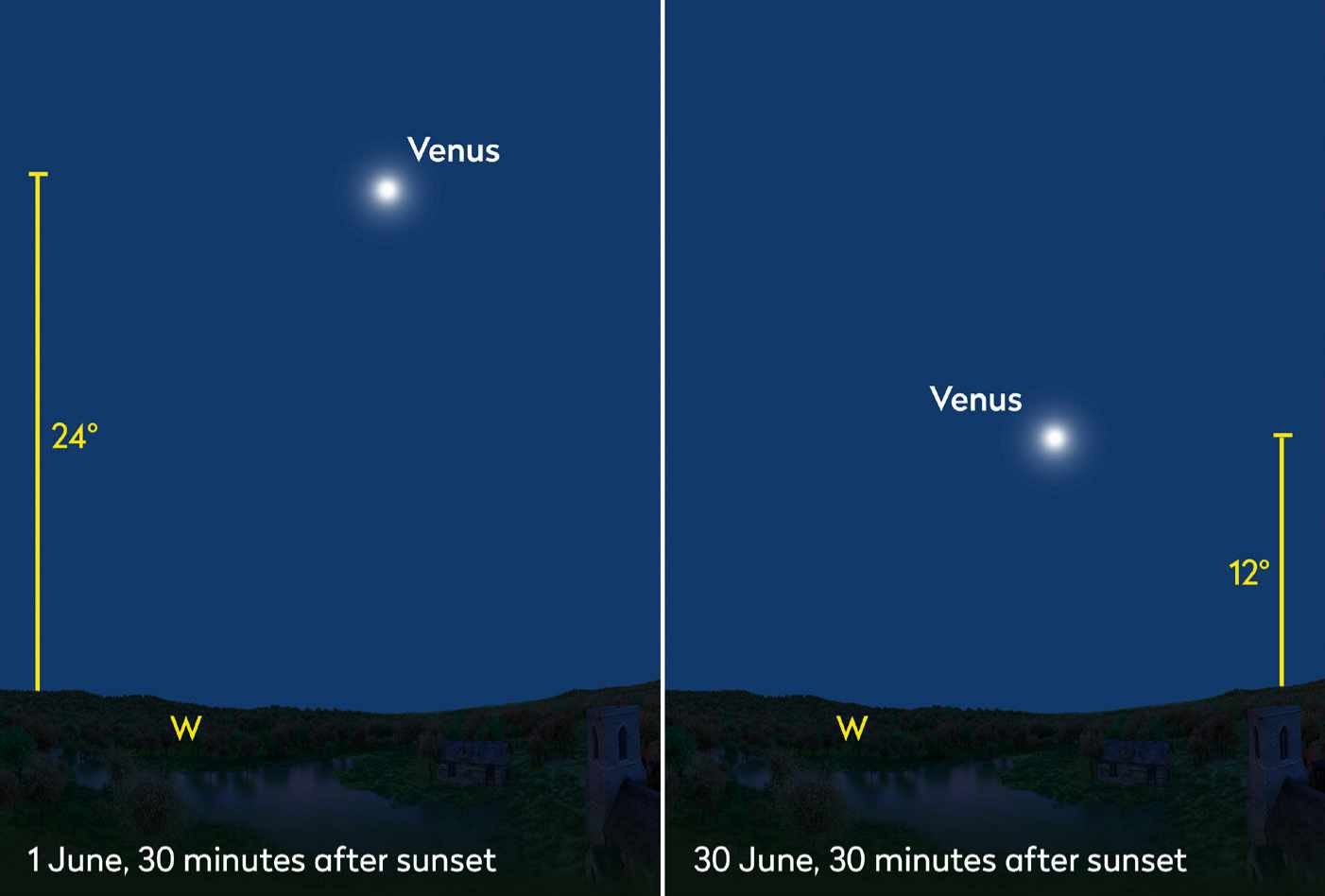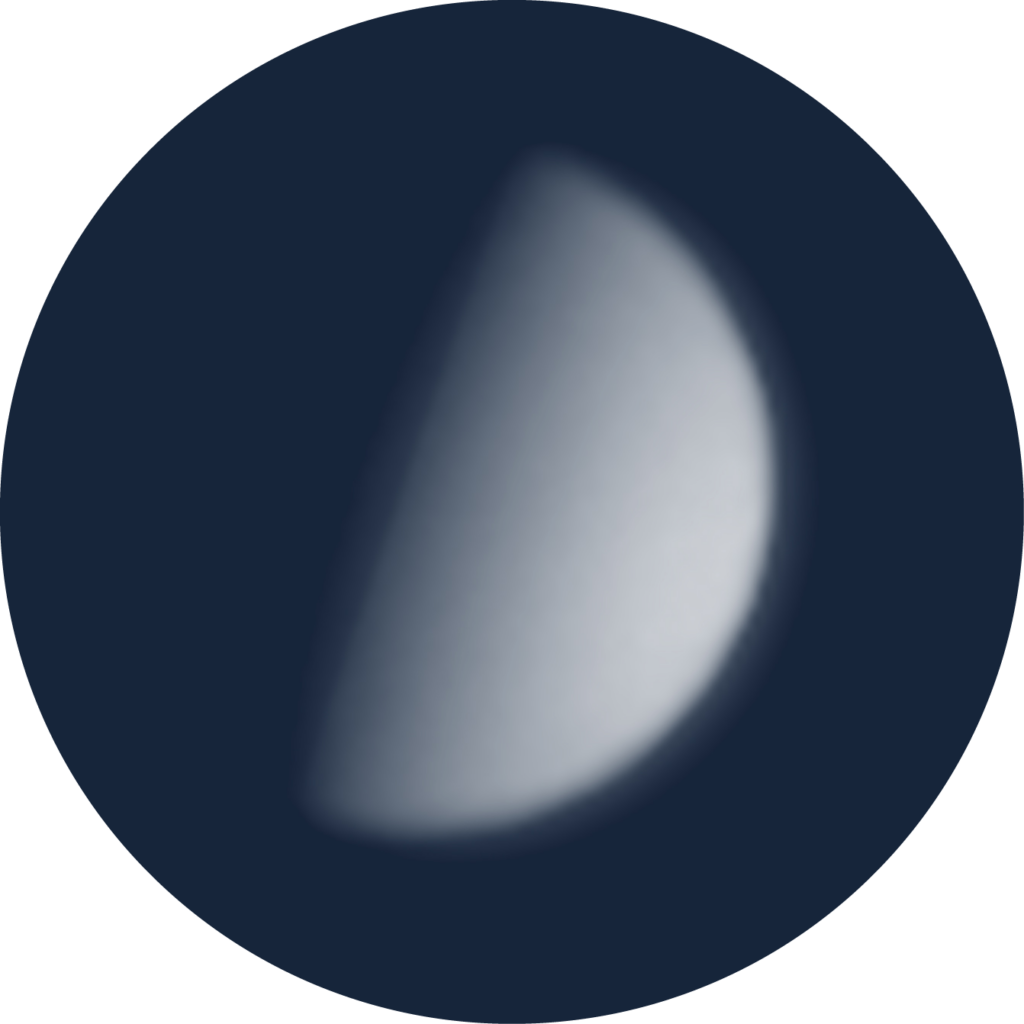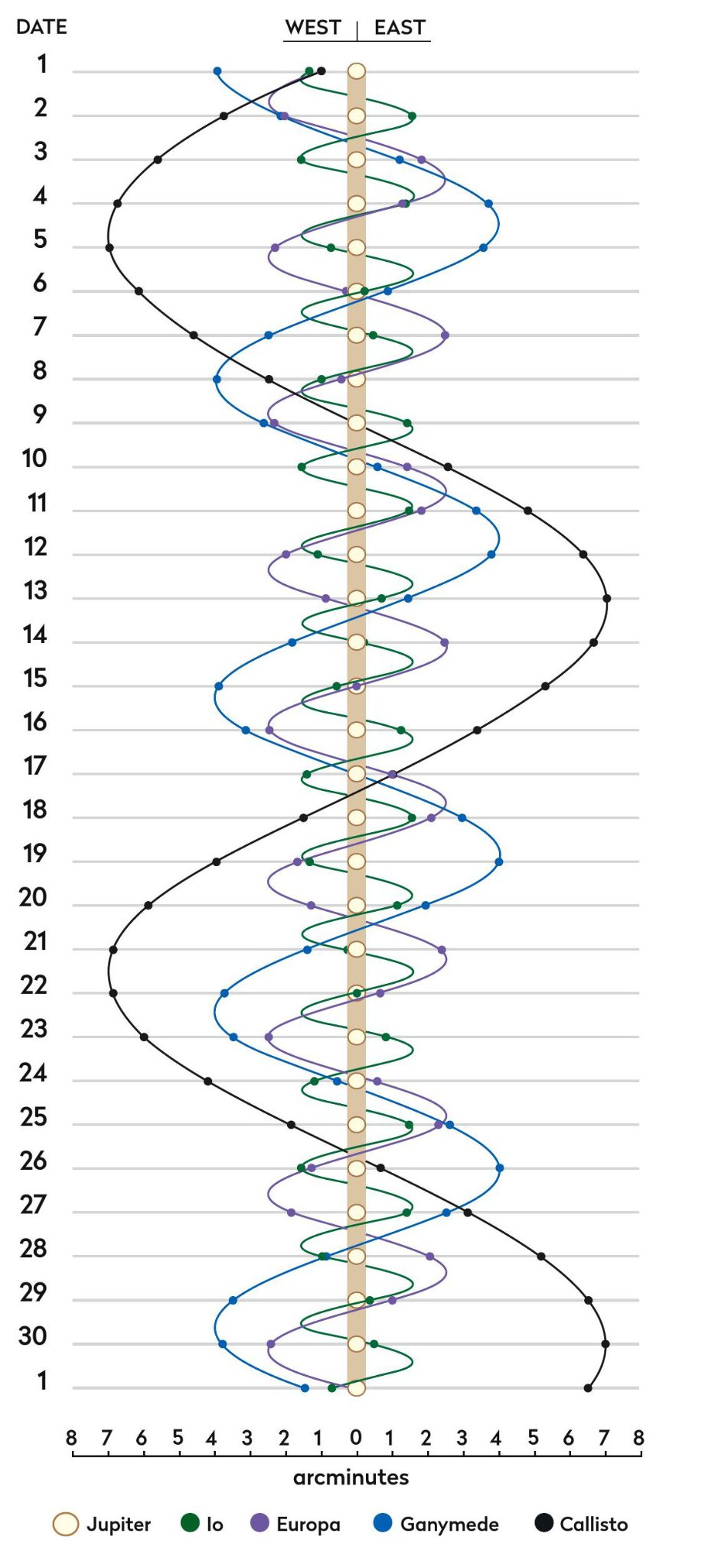Our celestial neighbourhood in June
PICK OF THE MONTH
Venus
Best time to see: 1 June, from 1 hour after sunset
Altitude: 19°
Location: Gemini
Direction: West-northwest
Features: Phase, subtle surface markings
Recommended equipment: 75mm or larger

Venus is literally at a turning point in the evening sky this month, reaching a position known as greatest eastern elongation – when it appears furthest from the Sun on the sky’s dome – on 4 June, when it will be separated from the Sun by 45.4°. Despite such an excellent separation, Venus’s position is starting to deteriorate as seen from the UK, with the planet appearing lower in the sky after sunset.
As a consequence, on 1 June Venus sets 3.5 hours after the Sun, but by the end of the month this figure will have dropped to just two hours. At mag. –4.3, Venus appears to pass across the northern extremes of the Beehive Cluster, M44, on the evening of 12 and 13 June. This will be a very tricky thing to observe due to the bright evening twilight, which is always present while Venus is above the horizon.
A 12%-lit waxing crescent Moon sits near Venus on the evening of 21 June. On this date, mag. +1.7 Mars will appear close by too. The two planets are 3.6° apart at the end of June, but Mars will be hard to spot against bright twilight.
On the evening of 4 June, Venus will reach dichotomy, appearing half-lit. But does it look 50%-lit to you? The phase anomaly or Schröter effect is a phenomenon caused by Venus’s thick atmosphere, which affects the visual timing of dichotomy. Through a telescope, Venus appears to reach 50%-lit a few days early when in the evening sky and a few days late when in the morning sky. Take a look for yourself, making as many phase estimates as you can from late May through to mid-June.

Mercury
Best time to see: 15 June, 30 minutes before sunrise
Altitude: 2° (extremely low)
Location: Taurus
Direction: East-northeast
After a disappointing show last month, Mercury fares only marginally better during June. It’s a morning planet, but being located south of the ecliptic plane, fails to gather much altitude before sunrise. On the plus side, it is brightening and by midmonth, shining at mag. –0.6, Mercury rises 50 minutes before the Sun. On 16 June, a 4%-lit waning crescent Moon sits 7.4° west and slightly north of the planet (above and to the right from the UK). On 17 June, the now 1%-lit waning crescent Moon lies 5.4° to the northeast of Mercury (to the left from the UK). As the month progresses, Mercury appears brighter but it closes in on the Sun’s position, becoming lost in the glare during the last third of June.
Mars
Best time to see: 1 June, from midnight BST (23:00 UT)
Altitude: 9° (low)
Location: Cancer
Direction: West-northwest
An evening planet, mag. +1.6 Mars appears to cross the Beehive Cluster, M44, between 1 and 3 June, but low altitude and bright twilight make this tricky to see from the UK. The best strategy is to look for mag. –4.2 Venus low above the northwest horizon as the sky starts to get dark; Mars and the cluster are to the left and up a bit from brilliant Venus, as seen from the UK. Mars and Venus themselves appear to converge throughout June, joined by a waxing crescent Moon on the evenings of 21 and 22 June. On 28 June, Mars and Venus appear 3.6° apart. By the end of the month, Mars shines at mag. +1.7, appearing 4 arcseconds across through the eyepiece, which is too small for significant detail to be seen.
Jupiter
Best time to see: 30 June, 03:00 BST (02:00 UT)
Altitude: 10°
Location: Aries
Direction: East
Jupiter is a morning object, but the planet never manages to gain much height before the morning twilight engulfs it. A 15%-lit waning crescent Moon sits 0.6° to the north of the planet at 06:00 BST (05:00 UT) on 14 June. The Sun will be up at this time, but if you can find the Moon, this is a good opportunity to try to spot Jupiter under daylight conditions.
Saturn
Best time to see: 30 June, 02:20 BST (01:20 UT)
Altitude: 16°
Location: Aquarius
Direction: Southeast
Saturn’s situation is slowly improving, but it remains less than ideally placed this month. This is due to the planet having a low altitude and the dawn twilight making the sky too bright to give a decent view. A 58%-lit waning gibbous Moon sits 4° below mag. +0.7 Saturn on the morning of 10 June.
Uranus
Not visible
Neptune
Not visible
Neptune is a morning object that’s tricky to view, lost as it is in the dawn twilight.
The planets in June
The phase and relative sizes of the planets this month. Each planet is shown with south at the top, to show its orientation through a telescope

JUPITER’S MOONS: JUNE
Using a small scope you can spot Jupiter’s biggest moons. Their positions change dramatically over the month, as shown on the diagram. The line by each date represents 01:00 BST (00:00 UT).
